Here is Luna, an Easter Egger pullet we got as a week old chick in 2008. Pullet generally refers to a young female chicken. Some people refer to any girl chicken under a year of age as a pullet. I tend to call them pullets until they lay at around six to eight months old, then I call them hens.
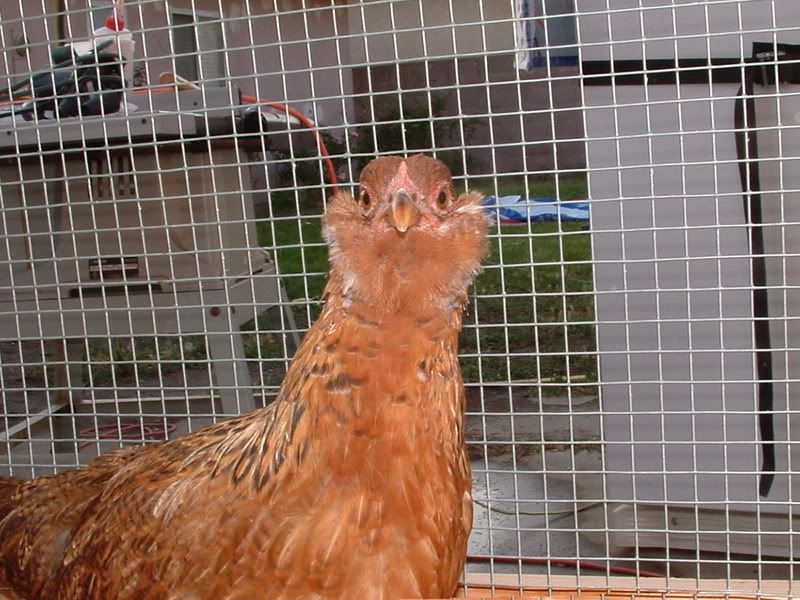
We only have hens on our property since roosters aren't allowed in our area. Roosters are nice to have around as they look after the hens, protecting them as well as showing them the best places to lay and the choicest bits of food to scratch up. It is not necessary to have a rooster to get eggs, hens will lay eggs even if there is no rooster around.
There is a pecking order in every flock. This California Gray hen, Ginny, was the flock leader at our place for quite a while:
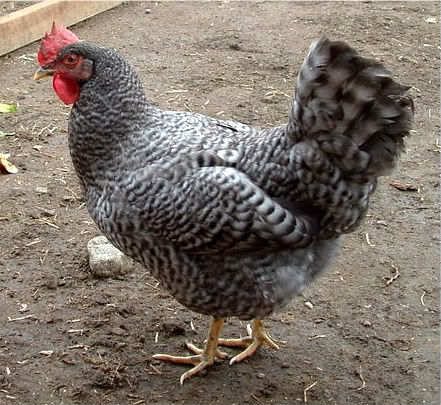
As you can see from the picture above, hens can have large combs (the red part on the top of the head), and wattles (the red parts under the beak), just as roosters do. Some people think only roosters have large, red combs and wattles, but the size and shape of the comb depends on the breed. Ginny, above, has a single comb and it is flopping over a bit at the top as is common for her breed. There are other types of combs, but a single comb is by far the most common. Luna, the Easter Egger in the first picture has a pea comb. Sprout, a Light Brahma, also has a pea comb (she is the white bird with the striking black feathers around her neck in this picture).

Chickens can fly a little bit, just not much. They can fly enough to get out of their run if there isn't anything to stop them. If left without a coop or roost to retire to in the evenings, chickens will roost in trees.
Chickens are social creatures. They like having other chickens around them. However, they will sometimes pick on a chicken they decide they don't like. We had two little Rhode Island Red chicks named Fred and George who just didn't fit in with the bigger girls when we got them. We ended up having two separate coops to house them in since they couldn't get along in the same one. Sadly, Fred was killed by (we suspect), a feral cat one night and George was quite lonely without her. In order to keep her from getting pecked by the big girls but still provide her with some company, we got two little Australorp chicks (Katie and Angelina) who adopted her as their mother. They would follow her around and copy her. She didn't mind their company and she and Katie are now the lead hens in our flock.
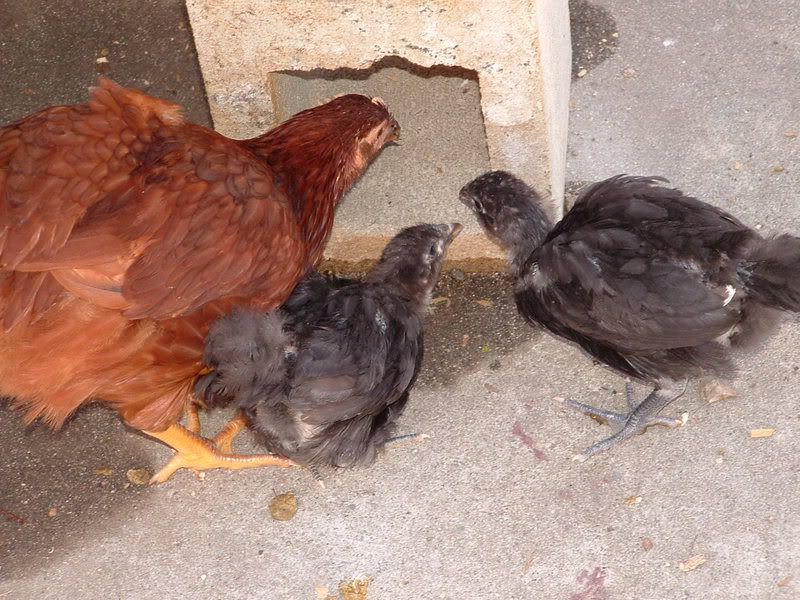
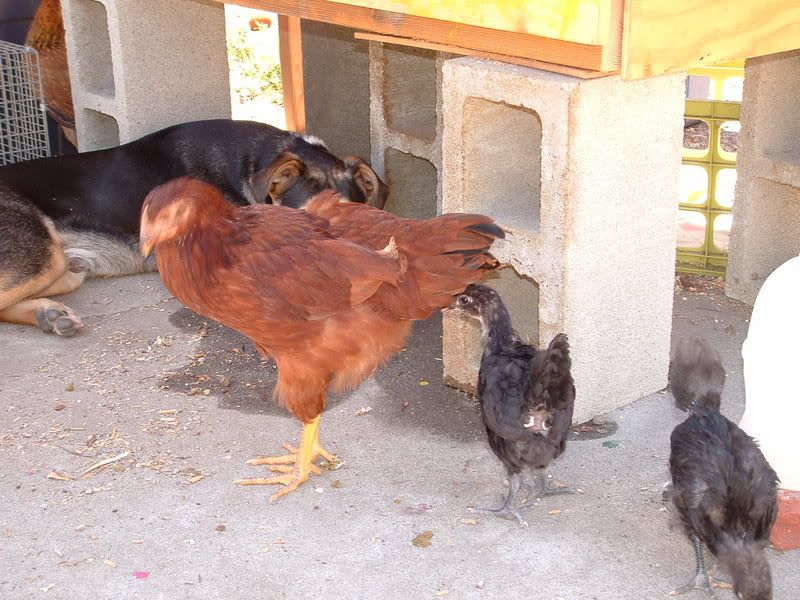
Chickens are ominvores and pretty much eat anything that crosses their path, including small rodents, frogs, each other *yuck! I try to give them lots of different treats to keep them healthy and busy. Yogurt is always a flock favorite.
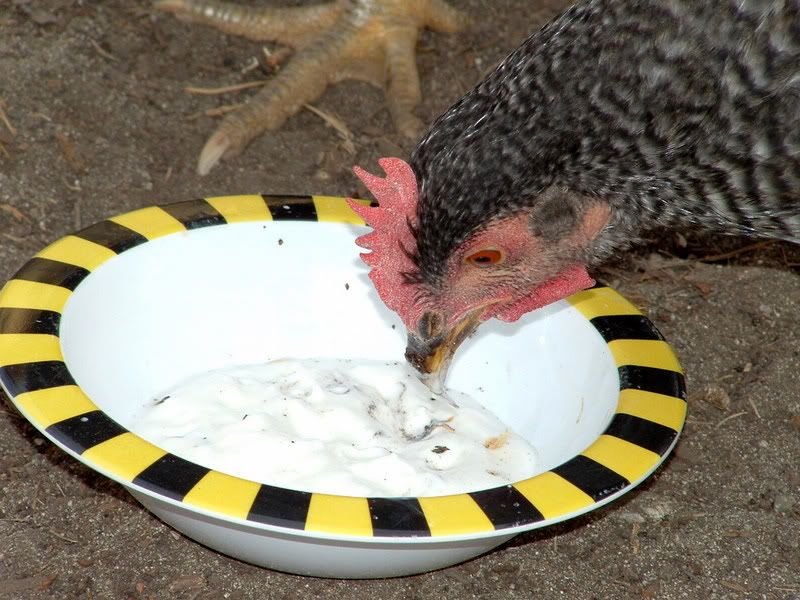

Chickens and other animals can coexist fairly peacefully as long as your other animals don't see your chickens as prey.
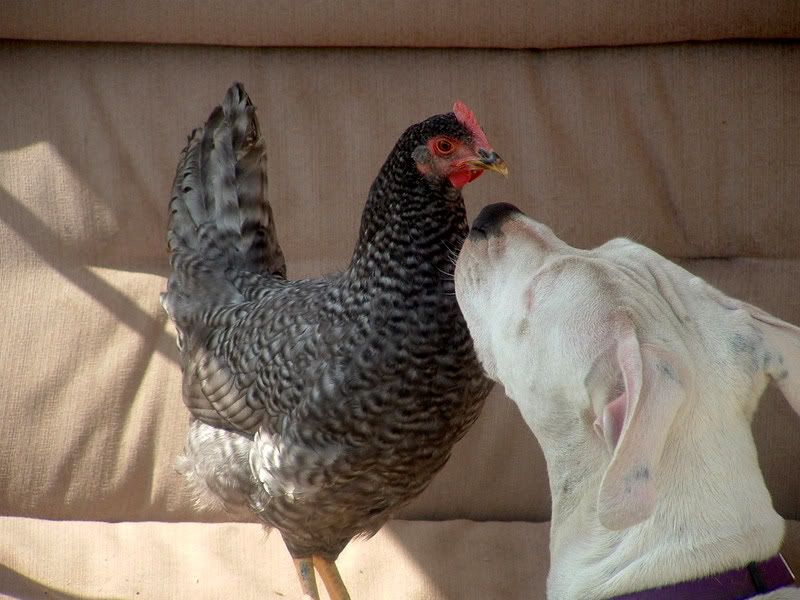
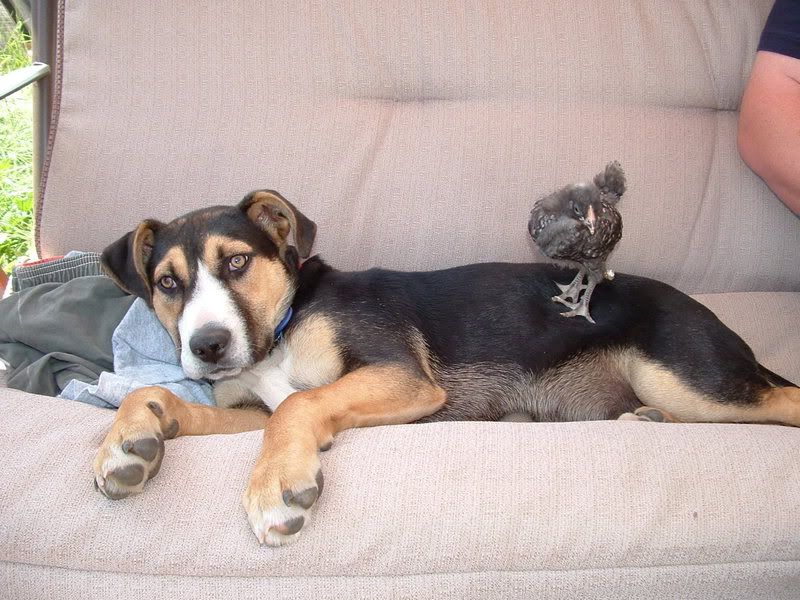
Everyone enjoys a bowl of raisin bran. Had I been quicker with the camera, you would be seeing a couple dogs with their heads in the bowl as well.
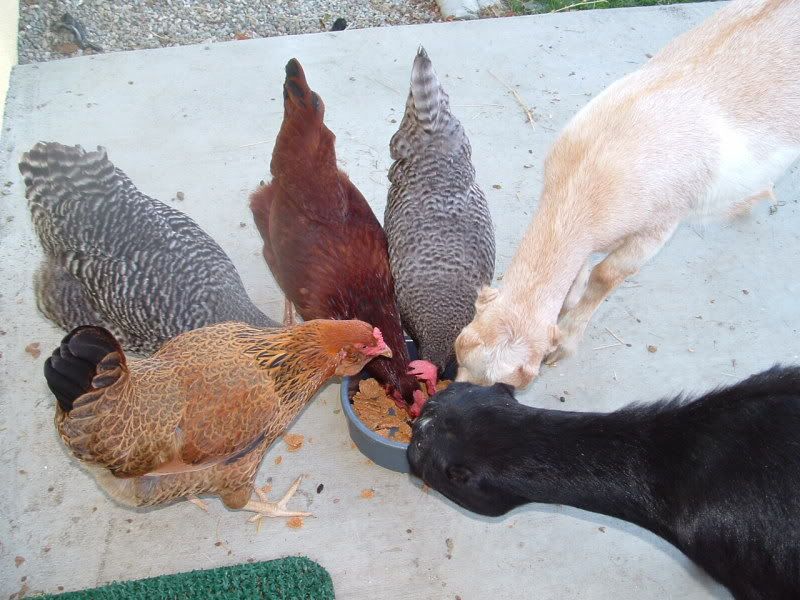

No comments:
Post a Comment